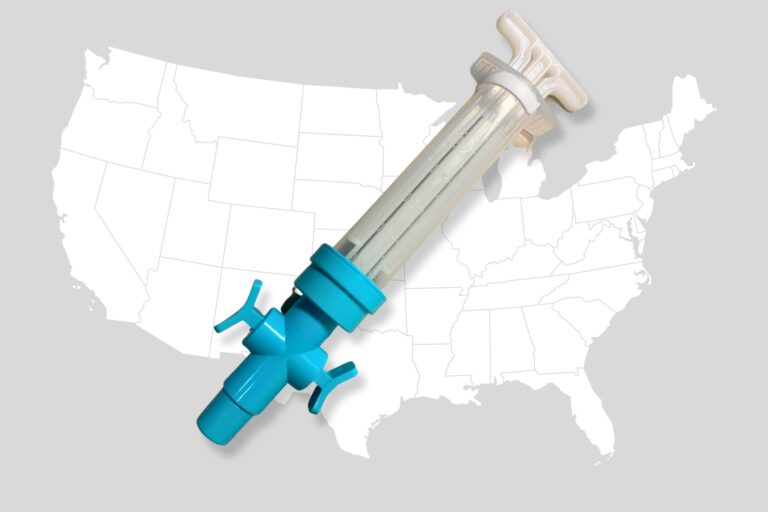The myth of over-population is one of the most enduring myths. It has remained a constant fear since Thomas Malthus first wanted England of the impending doom of an over-populated England in 1798.
Environmentalism, however, is a more recent phenomenon. But the concerns of environmentalism — that the natural world is becoming irreparably damaged by human activity have merged very easily with the fears of the Malthusian over-population theory — that growing human population is an inherent threat to human wellbeing.
At times, environmentalists use the over-population thesis as an argument for their programs of banning humans from ever-growing tracts of nature. At other times, they use reports of environmental degradation to serve as arguments for population control. The combination of environmentalist and Malthusian doom-saying has proven to be a powerful engine for population control.
Yet the “facts” of the environmentalists have proven to be no more accurate than the predictions of the population controllers.
Abundant Resources; Stable Supplies
“Many of the environmental concerns voiced by activists continue to be overstated,”1 explains James Sheehan, Director of International Environmental Policy at the Competitive Enterprise Institute.
Following are a number of facts not reported by environmentalists, facts which shake their alarmism at its roots.
Agriculture Productivity:
- Food prices continue to fall, as a continued series of bumper crops push grain and soy bean prices to their lowest level in a generation. In fact, the drastic fall of food prices is solely responsible for the general downward direction of the commodity price index since the beginning of 1999 – outweighing the otherwise upward trend in all non-food industrials.2
- American farmers received only $4.43/ bushel for soy beans last June, the lowest monthly price since December 1975. Meanwhile, market prices for wheat and corn are so low that planting costs have dropped to their lowest since 1973.3
- Confounding alarmist predictions, the US returned record corn crop productions in 1996. Prices of corn, wheat, and other commodities have fallen dramatically, ending fears of a global food shortage.4
- In the last forty years, the amount of cropland in production has remained constant. At the same time crop production per acre has more than doubled.5
- Another concern of the doomsayers is that population will outstrip human capacity to grow food. Per capita grain supplies have increased by over 24 percent since 1950 and food prices have plummeted by 57 percent since 1980. Wheat prices have gone from $256 per ton in 1950 to $90 per ton in the 1990s (in constant dollars). The drop in corn prices was equally impressive. These gains are not just confined to the industrialized countries. Impressive gains have also been experienced in developing countries. The rate of increase in food production in developing countries has been more than double the rate of population growth.6
US Forests and Wetlands:
- The US still has 20% of the total amount of forest lands that existed in the 1600s when the Pilgrims first arrived. Today, a total of 737 million areas of the US land mass are forest acres. Timberlands now contain 28% more standing timber volume than in 1952. 247 million acres are reserved from harvest by law or represent slow-growing woodlands unsuitable for timber production. Pulp and paper productivity has improved in the modern age since wood is a renewable natural resource and is completely recyclable.7
- Over the last fifty years America has been the world’s leading timber producer. During this period, total forest area remained stable and total standing timber volume increased significantly.8
- The US has achieved no net loss of wetlands; in fact, in the 1990s more wetlands have been created than have been converted to other land-uses. Every year the U.S. is gaining tens of thousands of acres of wetland habitat.9
Clean Air, Water:
- The air in US cities has improved significantly. Airborne lead has decreased by 89%; carbon monoxide by 37%; sulfur dioxide by 26%, and ground level ozone has dropped 21% from 1984 to 1993. The Environmental Protection Agency, however, has pushed through more stringent air quality standards, including provisions to reduce amounts of airborne “dust.”10 In twenty five years of environmental activism, the Western developed world has seen marked improvements in air and water.11 Smog has declined by one-third, despite a doubling of both numbers of vehicles and miles driven. In Los Angeles, smog has declined by one-half. In 1972 one-third of US bodies of water were safe for fishing and swimming. Today, two-thirds are. The last load of sludge that was dumped into a body of water was in 1992.12
- US ambient levels of sulfur dioxide, carbon monoxide, volatile organic compounds, atmospheric ozone and particulates are decreasing.13
- Industrial pollution has been largely eliminated as a source of contamination in most of America’s rivers, lakes and streams. Consequently, 95 percent of the nation’s rivers are considered fishable.14
Natural Resources:
- Relative to wages, natural resources today are about half as expensive as they were in 1980; three times less expensive than they were 50 years ago, and eight times less expensive than they were in 1900. In the 1970s, it was claimed that America would run out of oil in the next 10 to 20 years, yet since the 1950’s reserves of oil have increased by over 700 percent. Discoveries of new oil deposits, as well as better extraction technologies, have played a major role in our ability to meet our present and future demands.15
- Ninety-five percent of the world’s metal demand is for iron, aluminum, silicon, magnesium, and titanium, all of which are considered inexhaustible by the World Bank. Metals such as copper, zinc, manganese, chromium, lead, nickel, and tin are considered nearly inexhaustible and make up 4.85 percent of the world demand for metals. The World Bank also estimates the amount of metals in the top mile of the earth’s crust to be a million times greater than current known reserves.16
Solutions:
Population control is not the answer to global food shortages. Market-driven innovations in fertilizer use, high-yield seed hybrids, and biotechnology have stimulated agricultural productivity.17
Adding to the irony of more than adequate environmental capacity, it is clear that birth rates are plummeting, not just in developed nations, but in the developing world as well.18 As the world grows ever more capable of sustaining increasing numbers, human population is on the verge of an absolute decline.
If current trends in declining fertility continue as they are now, the world’s population could reach a peak of 7.47 billion people in 2040, then drop by 120 million between 2040 and 2050, then continually decline by nearly 30 percent per generation, according to the UNPD’s low variant projections which are the most historically accurate.
Higher estimates have the world’s population reaching a high of between 9 billion and 11 billion people after which population will decline. UNPD’s “worst-case scenario” has population cresting in the year 2075.
Regardless of the projection, given our proven ability to continually increase the availability of resources and food, there is little reason to doubt that we will be able to provide for a much higher population than we now have.
Population in Prospective
Let’s put the world’s population into perspective. The entire population of the United States of America lives on three percent (3%) of the nation’s landmass. That includes all cities, suburbs, highways, bridges, railroads, and airports combined. The entire population of the world could comfortably live in the State of Texas.
The UN is constantly revising its population projections — downward. The fact is, as individual countries become more prosperous, their population declines.19
“The keys to reduced hunger are growing economies and rising incomes, which allow citizens to become healthier and live longer. Coercive actions by governments to squelch population growth are no solution,” said James Sheehan.20
Given the world’s space, resource availability and production capacity, should not the focus of our “problem-solving” be in finding ways to promote societal and economic models which respect the dignity of the individual human person, rather than on population control?
Michele Madasz is PRI’s Associate Program Coordinator
Endnotes
1 CEI, “Population Control Won’t Stop World Hunger: UN Should Not Have Expelled Dissenters from Food Summit”, Press Release, 15 November 1996.
2 The Economist, “Economic Indicators,” 2l August 1999, 88.
3 The Economist, “Economic Indicators,” 3 July 1999, 92.
4 “Population Control Won’t Stop World Hunger…”.
5 Council of Economic Advisors, Economic Report of the President, Washington, D.C.: Government Printing Office, January 1993, 456–457.
6 Dennis Avery, “Saving the Earth with Pesticides: Increasing food supplies while preserving the earth’s bio-diversity,” in The True State of the Planet, Ch. 2, 50–81.
7 Roger Sedjo, “Forests: Conflicting Signals.” in The True State of the Planet, Ch. 6, 177–210.
8 Ibid.
9 Jonathan Tolman, “Achieving No Net Loss,” National Wetlands Newsletter, May/June 1995, 5.
10 Indur Goklany, “Richer is Cleaner: Long Term Trends in Global Air Quality,” in The True State of the Planet, Ch. 10, 340–377.
11 Bailey, Ronald, Prologue, in The True State of the Planet, 1.
12 Greg Easterbrook, “A Movement on the Earth: The Coming Age of Environmental Optimism,” in Is Creation at Risk?” Exploring the Environmental Context of Population Control. William B. Erdmans Publishing, 1995.
13 Council on Environmental Quality, Environmental Quality, Washington, D.C.: CEQ, 1992.
14 U.S. Environmental Protection Agency, Environmental Indicators of Water Quality in the United States, Washington D.C.: U.S. EPA, June 1996.
15 Stephen Moore, “The Coming Age of Abundance,” in The True State of the Planet, Ch. 4, 110.
16 Stephen Moore, “The Coming Age of Abundance,” in The True State of the Planet, Ch. 4, 110–113.
17 “Population Control Won’t Stop World Hunger…”.
18 Ronald Bailey, Prologue, in The True State of the Planet, 2.
19 One of the first to document this now generally recognized correlation was economist Simon Kuznets. See his Modern Economic Growth: Rate, Structure and Spread, New Haven; Yule University Press, 1966.
20 CEI, Issue Brief: Population, 1 March 1999.










